
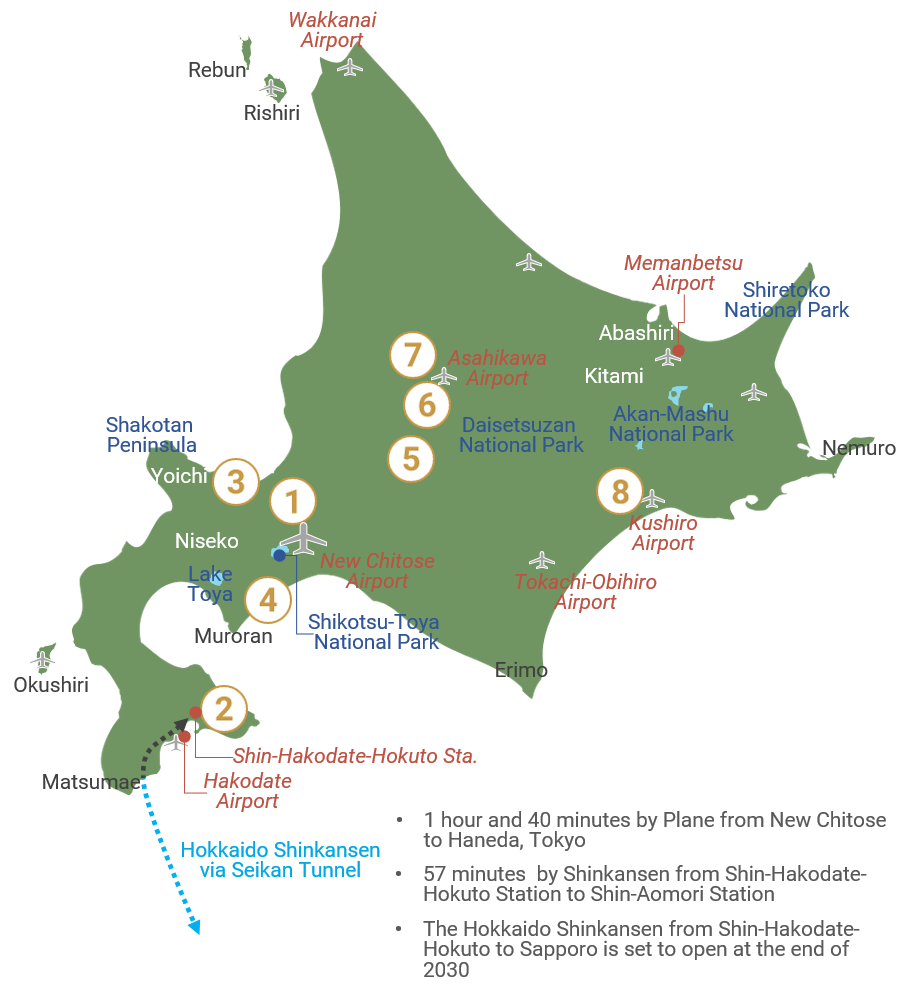
Founded in the late 19th century, Sapporo is the capital of Hokkaido and a symbol of Japan’s modern frontier development. It hosted the 1972 Winter Olympics and is known for its snow festival, ramen, and beer culture. Today, it blends urban sophistication with northern charm.
Video by City of Sapporo, © City of Sapporo.
As one of Japan’s first international ports, Hakodate developed a distinct East-meets-West character during the late 19th century. The city is known for its historic red-brick warehouses, night views from Mt. Hakodate, and star-shaped Goryokaku Fort. Its coastal beauty and cultural legacy make it a southern gateway to Hokkaido
Video by City of Hakodate, © City of Hakodate.
Once a prosperous trade port, Otaru flourished in the early 20th century as Hokkaido’s financial hub. Its preserved canal district and stone warehouses reflect its Meiji-era prosperity. Today, the city charms visitors with glassware, music boxes, and scenic harbor views
Video by Otaru Tourism Association, © Otaru Tourism Association.

Noboribetsu gained fame as a hot spring destination in the late Edo period, when a public bath was built in Hell Valley (Jigokudani). By the late Meiji period, enhanced transportation, particularly trains, contributed to its nationwide recognition as a recuperation area
View Noboribetsu Sta. on Google MapsSurrounded by mountains and forests, Furano City offers a tranquil escape. With easy access to major cities like Asahikawa (1-hour drive), Sapporo, and Obihiro (2-hour drive), it's known for its wine and as the backdrop for the drama "From the North Country"
Video by Furano Tourism Center, © Furano Tourism Center.
Biei is a picturesque farming town defined by gently rolling hills and colorful flower fields. Its patchwork landscapes, framed by the Daisetsuzan mountains, are among Hokkaido’s most photographed vistas. Biei reflects the harmony of rural life and natural artistry
Video by Biei Town, © Biei Town.
Asahikawa is Hokkaido’s second-largest city and a key transportation and cultural hub for central Hokkaido. It is known for its award-winning zoo, Asahikawa ramen, and access to nearby ski areas and the Daisetsuzan National Park. The city balances urban vitality with alpine access
Video by Asahikawa City, © Asahikawa City.
Kushiro City, famed for its national parks like Kushiro Wetland and Lake Akan, enjoys cool summer temperatures around 20°C. It's renowned for its green-colored soba noodles infused with chlorella and comprises two distinct areas post-city restructuring, alongside Kushiro Town
Video by Kushiro Tourism & Convention Association , © Kushiro Tourism & Convention Association .
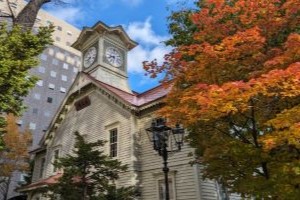
The "Sapporo Clock Tower," once the "Former Sapporo Agricultural College Drill Hall," was built in 1878. Designated an Important Cultural Property in 1970, it's been a library and now stands as a cherished symbol of Sapporo, telling time for its citizens
View on Google Maps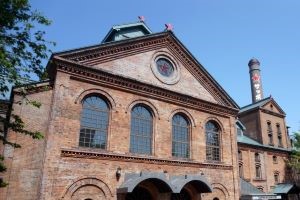
The Sapporo Beer Museum, designated as a Hokkaido heritage site, is a brick building with a rich history. As Japan's oldest beer museum, it allows visitors to explore the passion of the pioneers who contributed to Japan's beer industry alongside the history of Hokkaido's development
View on Google MapsThe Hokkaido Museum, opened in 2015, combines the Hokkaido Pioneer Village Museum and the Hokkaido Ainu Center. It showcases the region's nature, history, and culture, including research on Ainu culture and settlers' lifestyles
Video by Hokkaido Museum, © Hokkaido Museum.
The Hokkaido Pioneer Village is an open-air museum where buildings from various locations in Hokkaido, constructed from the Meiji era to the early Showa era, have been relocated, restored, and reproduced on a 54.2-hectare site
View on Google MapsUpopoy is Japan’s national center for Ainu culture, combining a museum, open-air village, and cultural facilities on the shores of Lake Poroto. Opened in 2020 in Shiraoi Town, it serves as a space for learning, dialogue, and cultural revitalization. Visitors can explore Ainu traditions through exhibitions, performances, and interactive experiences
Video by The Foundation for Ainu Culture, © The Foundation for Ainu Culture.
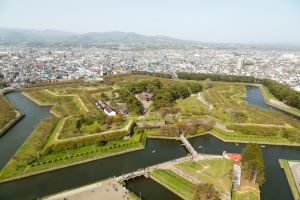
Japan's first Western-style fortress, built in the late Edo period, doubled as the new site for the Hakodate Magistrate's Office. It soon became the stage for the decisive Hakodate War, the ultimate clash of the Boshin War between new government and former shogunate forces, originating from the Battle of Toba-Fushimi in 1868
View on Google Maps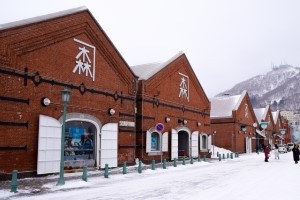
In 1887, Hakodate welcomed its first commercial warehouse, kicking off the red brick era. Despite fire damage, it was rebuilt and transformed into today's multifunctional complex for shopping and dining by 1988
View on Google Maps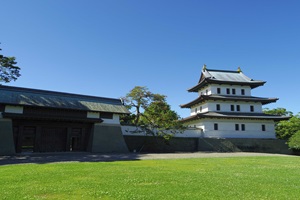
Constructed under special orders from the shogunate for northern defense, was designed by military scholar Ichikawa Ichigaku. Completed in 1854, it stands as the last Japanese-style castle in Japan
Photo by Matsumae Town, © Matsumae Town.
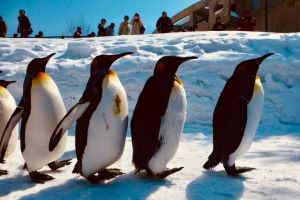
The famous Asahiyama Zoo doesn't host rare animals. It features common species or those native to Hokkaido, each with its own charm. The zoo lets animals display their unique traits through innovative exhibits
View on Google Maps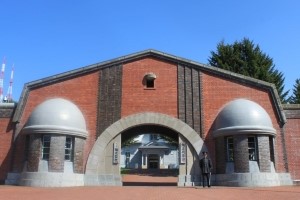
The Abashiri Prison Museum preserves and displays buildings used in the Abashiri Prison since the Meiji era. The oldest structure reflects the era when timber was hand-cut, leaving rough marks from prisoner labor on the thick beams and pillars
Photo by Abashiri Prison Museum, © Abashiri Prison Museum.

With roots tracing back to the Edo period as a herring fishing hub, Shakotan became a sought-after driving destination with the opening of National Route 229 in 1996. Its mesmerizing "Shakotan Blue" sea merges with the azure sky on the horizon
View on Google MapsRenowned for its world-class winter allure, Niseko boasts exceptional powder snow and premier ski resorts. Beyond winter, the region offers outdoor activities such as hiking, biking, and golfing. Visitors can also enjoy relaxing hot springs and explore picturesque nature trails
Video by Niseko Town, © Niseko Town.
Formed by a massive eruption around 110,000 years ago, it's the third largest caldera lake in Japan, nestled within Shikotsu-Toya National Park. Mt. Yotei stands to the north, while Mt. Usu and Mt. Showa-Shinzan grace its southern shores, offering diverse scenery year-round
Video by Toyako Onsen Tourist Association, © Toyako Onsen Tourist Association.
In southwest Hokkaido, Shikotsu-Toya National Park has two major caldera lakes, many volcanoes, and hot springs, including popular spots like Noboribetsu and Jozankei. Lake Shikotsu, the northernmost ice-free lake, has stunning scenery and is close to Sapporo and New Chitose Airport
Video by Ministry of the Environment, © Ministry of the Environment.
Situated about 26 km south of downtown Sapporo, Jozankei is a renowned hot-spring resort nestled in a lush ravine within the Shikotsu-Toya National Park. Accessible by car in just under an hour, this tranquil retreat draws numerous visitors annually
Video by Jozankei Tourist Association, © Jozankei Tourist Association.
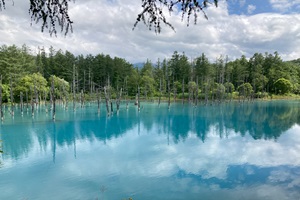
During disaster prevention work on Mount Tokachi, water accumulated in the dam takes on a striking blue hue, creating a surreal landscape when combined with the standing dead larch trees. It soon became known as the "Blue Pond"
View on Google Maps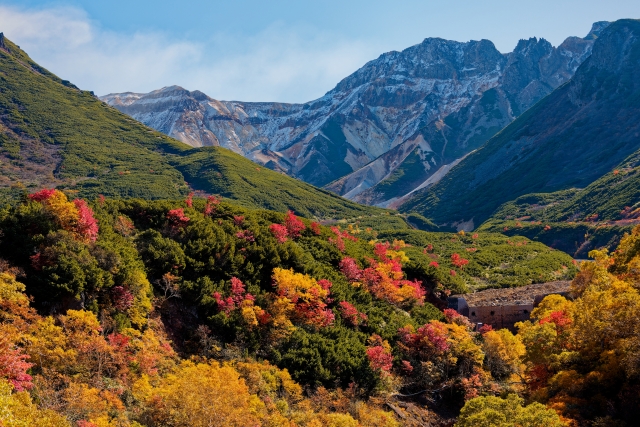
Hokkaido's largest national park, Daisetsuzan, features rugged mountains, alpine flora, and wildlife, and offers hiking, skiing, and hot springs. The Ainu people revered it as "Kamui Mintara" (the garden where the gods play)
View on Google MapsSince 1950, the Sapporo Snow Festival has been an annual event in early February across several venues, including Odori Park in Sapporo City. It showcases stunning snow and ice sculptures, particularly in Susukino
Video by Hokkaido Tourism Organization, © Hokkaido Tourism Organization.

Winter tradition in the port town of Otaru, where the streets are adorned with countless snow candles. The main venue is the Otaru Canal, offering picturesque views of floating ball candles made from fishing gear
View on Google MapsSince 1947, it features impressive snow sculptures and winter activities, held every February
Video by Asahikawa Winter Festival Executive Committee, © Asahikawa Winter Festival Executive Committee.
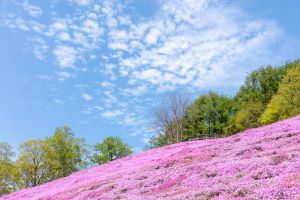
Known for its springtime hillsides covered in pink moss phlox
Photo by Ozora Town, © Ozora Town.
Dynamic dance festival blends traditional Yosakoi and Soran music, celebrated every June.
View on Google MapsCelebrates the blooming lavender fields during the summer months. Visitors can experience the beauty of illuminated lavender at Hinode Park, along with the lights of Kamifurano Town
Video by Lavender Festa Kamifurano Steering Committee, © Lavender Festa Kamifurano Steering Committee.
Hokkaido's cuisine blends Japanese and Western flavors, with traditional dishes alongside Western staples like flour, potatoes, dairy, and meat. Introduced by the Hokkaido Development Commission in the early Meiji period, Western cuisine quickly integrated, especially bread and meat, favored for the cold climate. Since the 1918 Hokkaido Exposition, Western culinary influences have become integral to Hokkaido's food culture.
While many countries preserve diverse regional cuisines, Japan also offers its unique culinary journey. This video highlights select dishes, showcasing distinct local specialties and historical influences in the region
Video by Ministry of Agriculture, Forestry and Fisheries, © Ministry of Agriculture, Forestry and Fisheries.
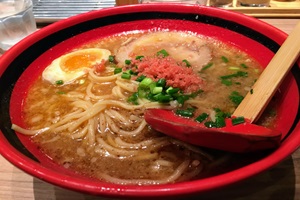
Signature noodle dish featuring rich broths like miso and seafood essence, with savory toppings of local ingredients

Thanks to Hokkaido's coastal bounty, it's known for its fresh crab, scallops, salmon, and sea urchin
Lamb was once unpopular due to its strong flavor. Marinating and grilling made it popular, leading to the local dish Genghis Khan (Jingisukan)
Includes cheese, milk, and ice cream, with the dairy industry expanding since the early 20th century
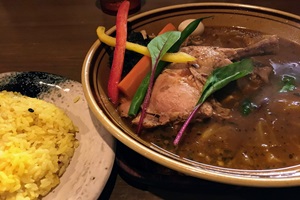
Originated in Hokkaido and got popular due to its warming qualities in the cold climate, use of fresh local ingredients, and customizable nature
Revitalizes Niki Town by reclaiming land, sourcing local grapes, and offering a complete experience with a winery, vineyards, restaurant, and lodging
Video by NIKI Hills Winery, © NIKI Hills Winery.

JR Hokkaido is a part of the Japan Railways Group, operating trains across Hokkaido, Japan's northern island. Discounts, routes, and reservations with JR Hokkaido are available from the above link
Nexco East, one of Japan's three expressway management companies, offers international car renters unlimited access to the Japan Expressway network for a flat fee, covering most sections, with some exclusions
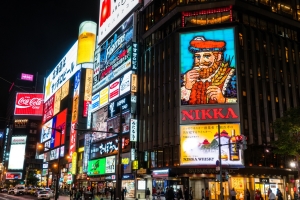
Susukino, established in the late 19th century for Hokkaido's laborers, evolved into Sapporo's bustling entertainment hub, renowned for its vibrant nightlife, diverse dining scene, and the annual Susukino Festival
Photo by Hokkaido Tourism Organization, © Hokkaido Tourism Organization.
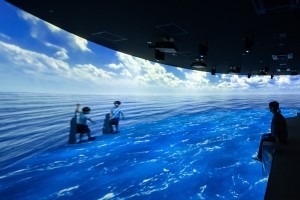
Urban aquarium opened in 2023. Located at the entrance of Tanukikoji Shopping Street in downtown Sapporo, it spans the 4th to 6th floors of "moyuk SAPPORO." The exhibits feature 250 species and 4,000 specimens, themed "Wonder of Life: Seeing the Unseen"
Photo by Hokkaido Tourism Organization, © Hokkaido Tourism Organization.
In 2023, HOKKAIDO BALLPARK F VILLAGE, including the new Hokkaido Nippon-Ham Fighters stadium, was established. It's not just for watching baseball but aims to be a "collaborative creation space," fostering community revitalization and social contribution
Video by HOKKAIDO BALLPARK F VILLAGE, © HOKKAIDO BALLPARK F VILLAGE.
Hokkaido, Japan’s northernmost and second-largest island, underwent rapid development in the 19th century, transforming from an untamed frontier into a thriving region. Its capital, Sapporo, stands at the heart of a landscape famed for national parks, rugged coastlines, and world-class winter sports. Hokkaido’s cuisine—rooted in fresh ingredients and supported by a growing wine scene—is matched by the region’s relaxed lodging and warm hospitality.
Video by Hokkaido Government, © Hokkaido Government.